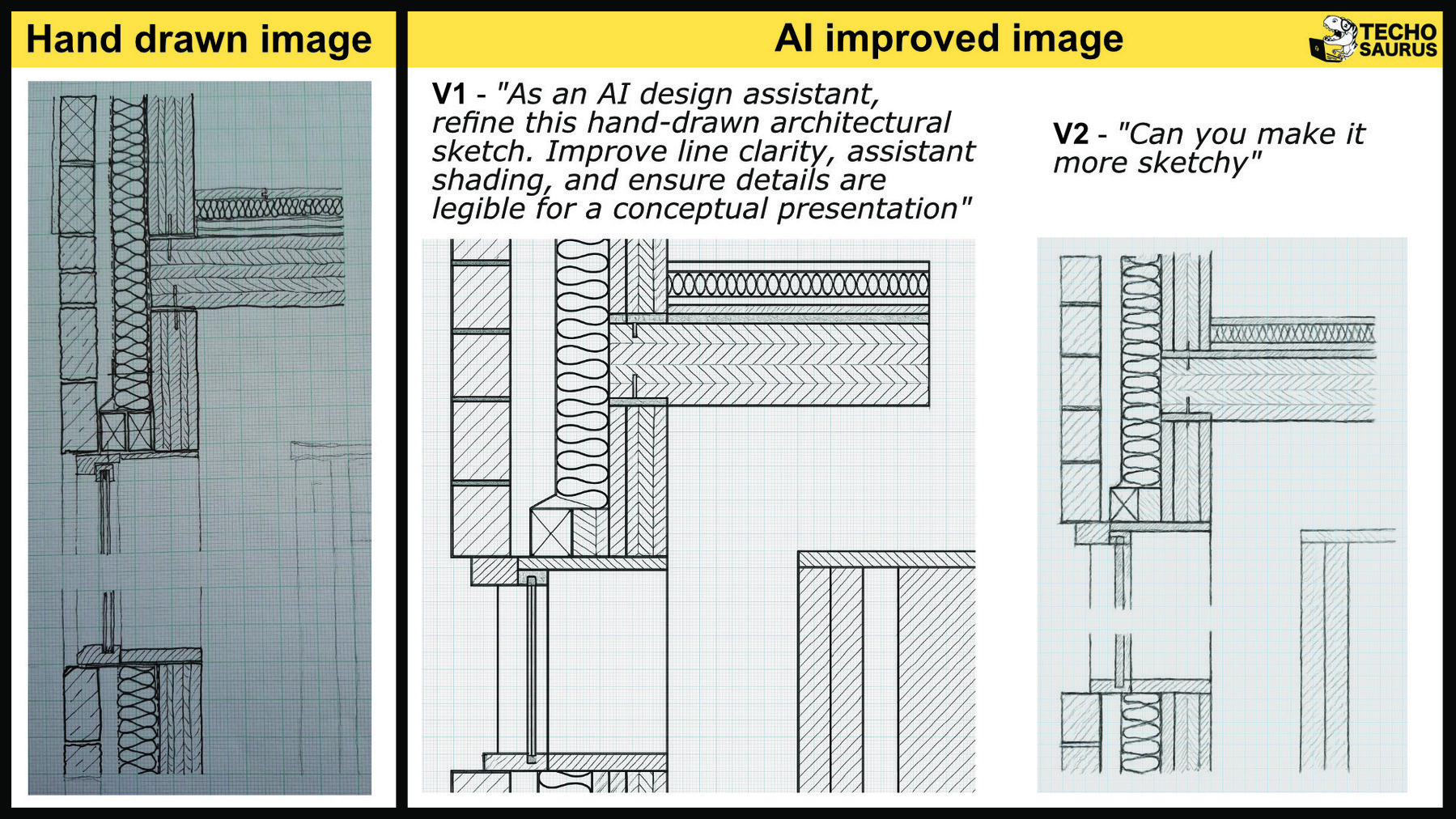Case Study: Exploring AI-Enhanced Architectural Sketching
During our recent AI Skills Bootcamp, one learner, Jade, who works in architecture, was excitedly accepted onto her Masters in Architectural Design. As she progressed through the course, OpenAI released a major upgrade to ChatGPT’s Image Generator - a new model replacing DALL·E and trained by professional artists to deliver highly refined image outputs.
Curious about its practical capabilities, I invited Jade to test the tool on her hand-drawn architectural sketches. What we discovered offers valuable insight into how AI can augment design workflows - improving clarity, flexibility, and creative expression while saving time.

The Starting Point: Hand-Drawn Technical Sketch
The original drawing is a section detail through a building junction, showing layered construction materials including bricks, insulation, and structural elements. Rendered on graph paper, it exhibits the detail and complexity expected in architectural technical drawings but retains the natural imperfections of manual drafting: variable line weight, shading inconsistencies, and some faint details.
AI Version 1: Precision and Presentation Ready
By using a carefully created ROAR prompt, Jade asked the AI to work as a design assistant to “refine this hand-drawn architectural sketch” with improved line clarity, consistent shading, and legibility, we obtained a digitally enhanced version:
- Lines are sharper and uniform, eliminating inconsistencies.
- Hatching and shading are clean and clearly delineate material boundaries.
- The overall image looks polished and professional, ready for conceptual presentations or early client reviews.
- Despite the digital enhancement, the drawing retains its technical accuracy and integrity.
This shows how AI can rapidly translate rough manual sketches into polished visuals without requiring time-consuming redrawing.
AI Version 2: Reintroducing Sketchiness for Conceptual Flair
Next, Jade asked the AI to “make it more sketchy.” The result is a softer, freer version where:
- Line weight varies more naturally, simulating pencil strokes.
- Shading is looser, giving an expressive, hand-rendered feel.
- Some simplification of structural details retains focus on key elements.
- The image balances technical information with artistic expression, useful in early design phases or client discussions.
This capability highlights AI’s flexibility - not only to refine but also to adapt style on demand - supporting diverse stages of architectural communication.
Strategic Insights and Implications
This exercise offers practical lessons for architects and designers integrating AI into their workflow:
- Efficiency Gains: AI significantly reduces time spent on manual redrawing and refinement.
- Style Versatility: The ability to toggle between precise technical renderings and expressive sketches enhances communication with different audiences.
- Enhanced Creativity: AI frees designers to experiment more rapidly, exploring multiple presentation styles and details.
- Human-AI Synergy: Rather than replacing architects, AI serves as an assistant—amplifying human creativity and precision.
Conclusion
Jade’s exploration illustrates how modern AI image generation tools are evolving into invaluable collaborators in architectural design. By improving both technical clarity and artistic expression, AI bridges the gap between initial ideas and client-ready visuals - transforming the way architects work and present.
As AI continues to advance, architects who embrace these tools will find themselves empowered to design smarter, communicate clearer, and innovate faster.
We are certainly excited to hear more from Jade as she pursues her career further, looking to see how AI can be better integrated into the world of Architecture.
What have you discovered about AI image generation in your field? Share your experiences and insights - we’d love to hear how AI is shaping your creative workflows.